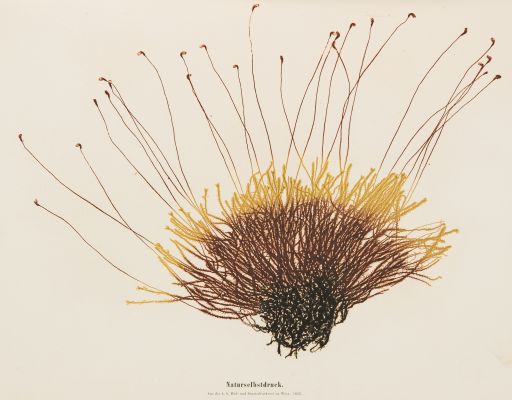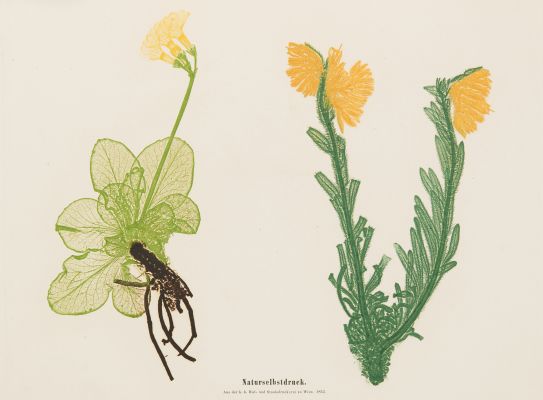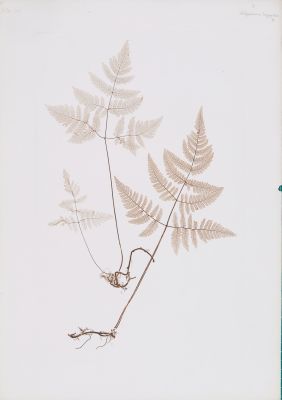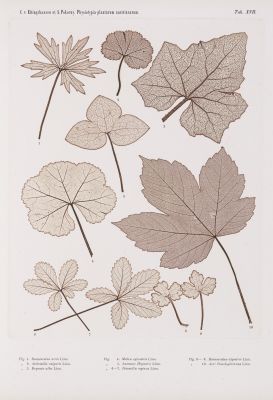
Title
Rhinolophus HippocrepisArtist
Auer, Alois (Austrian, 1813-1869)Publication
FaustDate
1855Process
Nature PrintAtelier
Alois AuerImage Size
10 x 22 cmSheet Size
25.5 x 35 cm
The fascinating nature print is from Alos Auer’s Faust: Poligrafisch-illustrirte Zeitschrift Für Kunst, Wissenschaft, Industrie Und Geselliges Leben (1854). Among the 72 plates included included there are 34 plates in nature printing, printed from items varying from lace to flowers, and from moss to a bat. Other illustrations are chromolithographs, lithographs, steel engravings, copper engravings, woodcuts, blind embossing, etc.
Auer is generally regarded as the man who invented the intaglio form of “nature printing,” using actual specimens of objects to act as a matrix for the printing plate. This volume was printed in answer to Henry Bradbury’s claim to have invented nature printing before Auer.
Nature printing is a printing process, developed in the 18th century, that uses the plants, animals, rocks and other natural subjects to produce an image. Originally nature prints were made by inking items such as fish or leaves with a roller, then printing them onto paper through a process of light controlled rubbing, much like one would print a woodcut. The “Auer Nature Print” however, began with an impression of the object into soft led which rendered a detailed continuous tone photographic likeness of an object without the use of a camera. It is likely that Walter Woodbury utilized a key concept inherent in this process as the basis for creating the popular Woodburytype. Alois Auer of Vienna invented the process in 1852, and Henry Bradbury patented his version of the process in England in 1853. Within ten years the technique was made obsolete by improvements in the photomechanical printing industry, and essentially “Nature Printing” disappeared from use.
Alois Auer named his process “Naturselbstdruckes”, which translates into “Nature-printing”, and then logically the end product of this process would be referred to as a “Nature Print”. However, the popular contemporary use of both of these terms confusingly refers both the original pre-1850’s process of “Nature Printing” and Auers’s. [1]
References
[1] Nicolai Klimaszewski https://www.alternativephotography.com/nature-printing/ Cited 1/23/23
DiNoto, Andrea, and David Winter. The Pressed Plant. New York: Stewart, Tabori & Chang, 2000.
Cave & Wakeman, Typographia Naturalis, 1967











